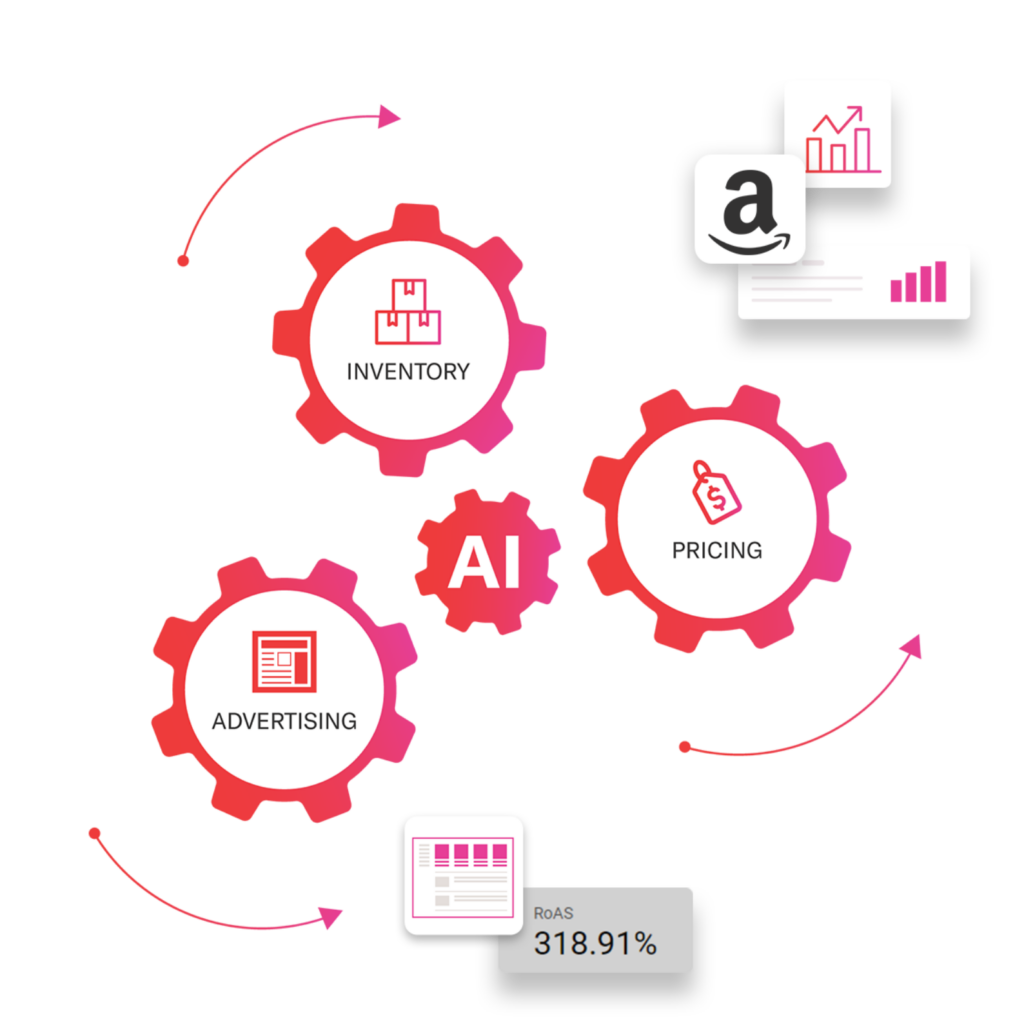Categories
Latest Posts
Tags
Advertising Amazon Amazon Advertising Amazon Experts Amazon Listing Optimization Amazon Marketplace Amazon News Amazon Prime Amazon Professional Sellers Summit Amazon Seller amazon sellers Amazon Seller Tips Amazon Seller Tools Amazon Software ASIN Brand Management Brands Buy Box Campaign Manager Conference COVID-19 Dynamic Pricing Ecommerce FBA FBM Holiday Season industry news Multi-Channel Fulfillment Optimize pay-per-click Pricing Algorithm Pricing Software Private Label Profits Repricing Repricing Software Revenue Sales Seller Seller-Fulfilled Prime Seller Performance Metrics SEO SKU Sponsored Products Ads Strategy
Get the latest insights right in your inbox

Seller Account
The Amazon Seller Account is each seller’s personalized portfolio and contains all the information applicable to the specific seller. Within the seller account, all listings, orders, transactions, and fees are recorded and stored for future reference. The seller can also personalize settings, manage orders, handle refunds, evaluate performance metrics, and view payment history through this account. Visit Seller Central for a complete discussion on what actions can be taken through the seller account.
Does a Seller Need a Seller Account?
An individual who wishes to conduct business transactions on any Amazon site must sign up for a seller account prior to any activity. Not all countries will accept an Amazon account, so potential sellers should check that their location is one that is recognized by Amazon. For a complete list of countries that are eligible for obtaining an Amazon seller account, visit the Countries Approved by Amazon page.
Seller Account Settings
Settings within the seller account are broken down into five categories: Inventory, Orders, Reports, Performance and Settings. Within each of these categories, there are numerous subcategories that the seller can individualize according to personal preference and need.
Individual Seller Account
When setting up a seller account, Amazon offers sellers two options: an Individual Seller account and a Professional Seller account. An Individual Seller account is ideal for a merchant who sells infrequently, and therefore doesn’t require the monthly surcharge that a Pro account accrues. Individual accounts are charged on a per product basis. That is, for each item that is sold through Amazon, the Individual Seller will be charged $0.99. Read about other Amazon Fees for the various charges that can be taken. Also find out which categories an Individual Seller is eligible to sell under.
Professional Seller Account
Alternatively, the seller can choose to sign up for a Professional Seller account if the number of products being sold exceeds the logical limit (i.e. is more than the monthly charge for a Pro account) or if the seller wishes to be entitled to the benefits of a more encompassing package. A Professional Seller account includes benefits such as Amazon-generated promotion if performance ratings are superior, tailored shipping charges, easier inventory processes, and more. Find a complete list of benefits, charges, and categories available to a Professional Seller here.

Increase Profits and Maximize RoAS with AI
Feedvisor has pricing and advertising optimization solutions built for every level of seller.
Setting Up and Using a Seller Account
As mentioned, the first step is setting up a seller account with Amazon. Visit Setting Up an Amazon Account for full instructions on how to accomplish this task. To begin using the account, the Seller should add an item. See Creating a Listing for instructions on how to add an item to the Seller’s inventory (this is known as setting up a listing). Once a product is listed on Amazon, the Seller has the opportunity to begin selling at any time. (Learn how to Sell Multiple Items here.) Notifications will be sent to keep the Seller apprised of the current situation of orders. Creating Your Seller Profile will enable the Seller to find out how to set up a Seller profile. This will tell Buyers all of the specific Seller details such as shipping and return policies, as well as branding information. The Seller should also read about Issuing Concessions and Refunding Orders to learn how and why a Seller would choose to give a Buyer a concession or refund on a purchase.
How Payments Work
Once the seller account is set up and bank account information is confirmed, the seller will receive payments every fourteen days automatically, assuming orders have been placed and payments have been cleared. Payments are directly deposited into the bank account that was provided by the seller at the initial setup of the account. Read more about Entering Your Bank Account Information. All payments, fees, and charges are recorded in the seller account, and can be accessed and reviewed on the Billing and Account Balances page. Please note: All outstanding charges, monthly fees, or refunds are taken out before funds are transferred.
Getting Paid Before the Fourteenth Day of the Cycle
Payments are generated through an automated system to be paid out on a fourteen-day cycle unless otherwise instructed. The seller can request a mid-schedule payment, in which case, the cycle would begin anew from the last date of payment. In order to ensure optimal security, any changes made to the seller’s banking information will hold payment for three days. This means that a manual transfer cannot be requested for 72 hours after bank account details have been updated. This is a precautionary measure to protect the seller against fraudulent transfers.


